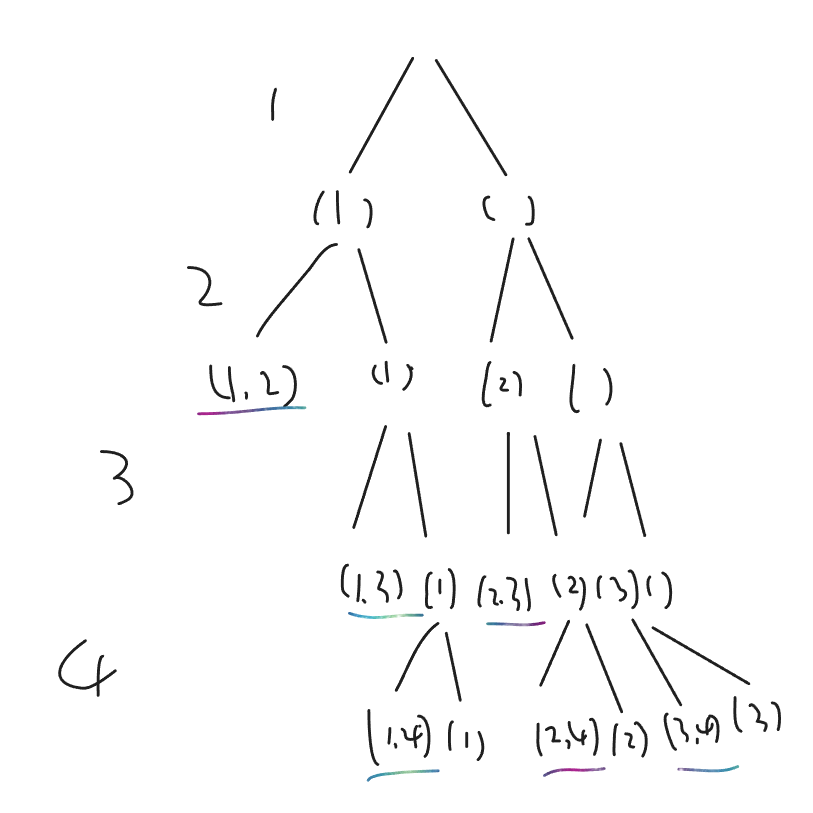题目
给定两个整数 n 和 k,返回范围 [1, n] 中所有可能的 k 个数的组合。
你可以按 任何顺序 返回答案。
示例 1:
输入:n = 4, k = 2
输出:
[
[2,4],
[3,4],
[2,3],
[1,2],
[1,3],
[1,4],
]示例 2:
输入:n = 1, k = 1
输出:[[1]]提示:
1 <= n <= 20
1 <= k <= n来源:力扣(LeetCode)
链接:https://leetcode-cn.com/problems/combinations
著作权归领扣网络所有。商业转载请联系官方授权,非商业转载请注明出处。
思路
经典的回溯问题,不同于排列问题,组合不考虑顺序,例如和
是同一种组合方式,因此需要避免这两者重复地加入结果集。
第一种思路是,和我们把它当做数学题的思路一样,比如,
到
中选两个,那么第一个数有四种选择,可选
,第二个数的选择就和第一个数有关系,只能选大于第一个数的,因为前面提到的,组合不讲究顺序,需要避免重复添加。这种方法的递归树如下:

第二种思路是可以依次考虑每个数选与不选,选够了个就表示获得了一种组合方式。这种方法的递归树如下图,从
开始考虑,每一个分支表示当前数选与不选,左分支为选,右分支不选,划横线的就是最终的
种组合方式,可以看出不同于第一种方法答案都在一层,这里不在一层。鼠标画画实在太难了,丑的自己也看不下去…

代码
方法一 考虑当前一步选哪个数
class Solution {List<List<Integer>> ans;public List<List<Integer>> combine(int n, int k) {ans = new ArrayList<>();Deque<Integer> path = new ArrayDeque<>();dfs(1, k, n, path);return ans;}private void dfs(int begin, int k, int n, Deque<Integer> path) {if (path.size() == k) {ans.add(new ArrayList<>(path));return;}// 当前位置考虑的起始范围由上一个数决定,只能往后考虑for (int i = begin; i <= n; i++) {path.push(i);dfs(i + 1, k, n, path);path.poll();}}}
方法二 从1到n考虑每个数选与不选
class Solution {List<List<Integer>> ans;public List<List<Integer>> combine(int n, int k) {ans = new ArrayList<>();Deque<Integer> path = new ArrayDeque<>();dfs(1, k, n, path);return ans;}private void dfs(int index, int k, int n, Deque<Integer> path) {if (path.size() == k) {ans.add(new ArrayList<>(path));return;}if (index > n) {return;}// 选择当前数indexpath.push(index);dfs(index + 1, k, n, path);path.poll();// 不选当前数indexdfs(index + 1, k, n, path);}}

